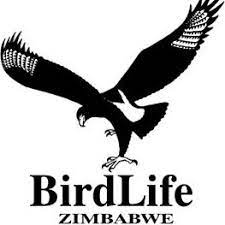IMPORTANT BIRD AREAS
Z008 Stapleford Forest
FULLY PROTECTED
GLOBAL IBA (Al, A2, A3)
18°42’S; 32°50’E
c. 326 000 ha
SITE DESCRIPTION
Stapleford Forest, near the village of Penhalonga, lies to the south of the Honde Valley, c.50 km northeast of Mutare. It forms part of Zimbabwe’s eastern border with Mozambique. The general area falls within the Mutasa Rural District Council and is under commercial forestry plantations controlled by the Forestry Commission of Zimbabwe. The Mutasa Communal Land forms the northern and western borders of Stapleford. The highest point of Mt Rupere (2 030 m a.s.l.) forms a watershed with the Odzani River flowing southwest and the Nyamahwarara River flowing northeast.
The proposed IBA includes three areas of indigenous rainforest and Brachystegia woodland found within Stapleford. There is a fairly large patch of montane rainforest on the south-eastern slope of a steep sided valley beneath Mt Rupere, next to the John Meikle Forest Research Station. It contains six different forest types comprising many interesting species. The high-altitude region consists mainly of Syzygium guineense subsp. afromontanum with Podocarpus latifolius further down slope and Craibia brevicaudata forest on boulder screes.
The area has not been ‘ground-truthed’, so the exact size is unknown.
On the eastern border, a prominent mountain, Garungwe, peaks at 1 885 m a.s.l. and drops steeply to the Nyamahwarara Valley at 700 m a.s.l. This medium-altitude forest is dominated by Maranthes goetzeniana and Khaya anthotheca. Breonadia microcephala grows along the stream banks. There are numerous specimens of the endangered cycad Encephalartos manikensis at the forest edge. The slopes of Mt Chinyamariro to the south of Stapleford has a well-developed Syzygium guineense afromontanum forest, most of which belongs to Border Timbers, a commercial forest estate.
BIRDS
Stapleford holds several globally threatened and restricted-range species. Approximately 8 pairs of Blue Swallow Hirundo atrocaerulea are known to breed on the nearby Mountain Home Estate (J. Meikle pers. comm.). It is not known how many birds breed on Stapleford. The area’s avifauna holds elements of the Afrotropical Highlands biome, a few from the Zambezian biome and a single East Coast species: Gorgeous Bush-shrike Telophorus quadricolor.
The Nyamahwarara Valley and John Meikle Forest area has been a well-known site for past avifaunal collections by P.A. Clancey (49 specimens in 1967) and M.P.S. Irwin (pers. comm.). Stapleford is the type locality for the following endemic races of species: Yellow-rumped Tinkerbird Pogoniulus bilineatus deceptor, Stripe-cheeked Greenbul Andropadus milanjensis disjunctus, Cape Robin-chat Cossypha caffra vespera, Cape Grassbird Sphenoeacus afer excisus, Red-faced Crimsonwing Cryptospiza reichenovii homogenes and Cape Canary Serinus canicollis griseitergum. There is no known checklist of birds for this estate and records have been taken from collections and atlas records.
CONSERVATION ISSUES
The Forestry Commission of Zimbabwe is entrusted with the protection of indigenous forests through the Forestry Act. Stapleford is thus, in theory, fairly well protected. However, threats to the area include increased afforestation with exotic timber, agriculture, cattle grazing, alien trees invading montane grasslands and stream banks, and soil erosion following the felling of plantations.
Globally threatened
* Wattled Crane – Breeding (pairs) – Br? | Total Numbers – 3 – 5
Swynnerton’s Robin – Breeding (pairs) – 20 – 50 | Total Numbers – 50 – 120
RR & BRA | STATUS
Whyte’s Barbet | Fairly Common
Blue Swallow | Fairly Common
Stripe-cheeked Greenbul | Common
Kurrichane Thrush | Common
Orange Ground-thrush | Fairly Common
Miombo Rock-thrush | Uncommon
White-starred Robin | Common
Swynnerton’s Robin | Uncommon
Yellow-throated Woodland-warbler | Common
Chirinda Apalis Fairly | Common
Roberts’s Warbler | Common
White-tailed Crested Flycatcher | Common
Gorgeous Bush-shrike | Fairly Common
Olive Bush-shrike | Fairly Common
Gurney’s Sugarbird | Uncommon
Bronzy Sunbird | Common
Miombo Double-collared | Sunbird Common
Red-faced Crimsonwing | Uncommon
Black-eared Seedeater | Rare
* – Species does not meet IBA threshold
RR & BRA – Restricted-range and Biome-restricted Assemblage
Br? – Suspected breeding
